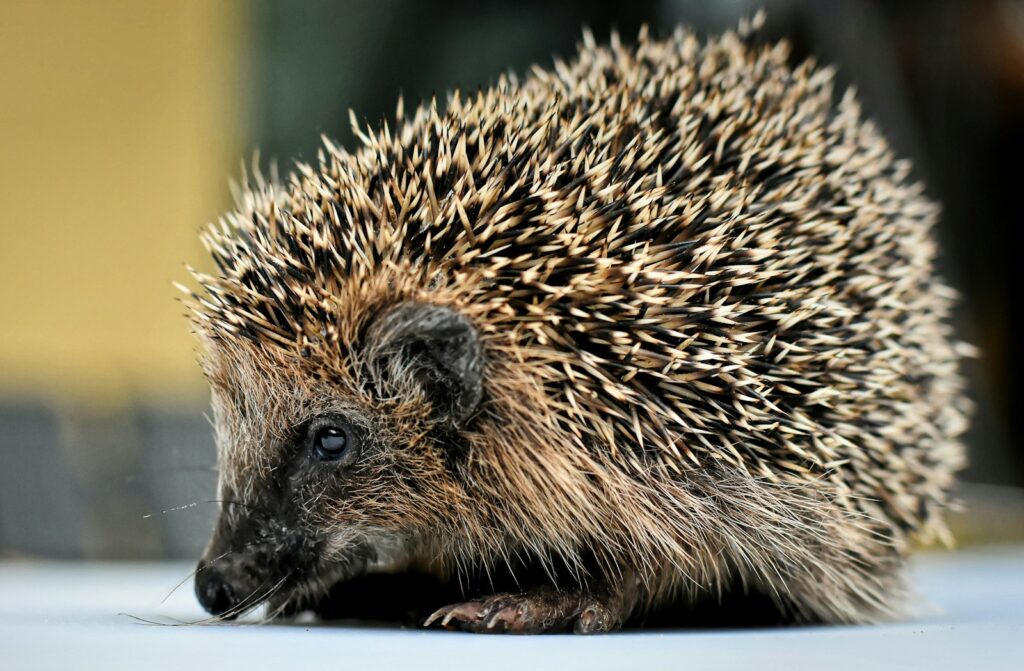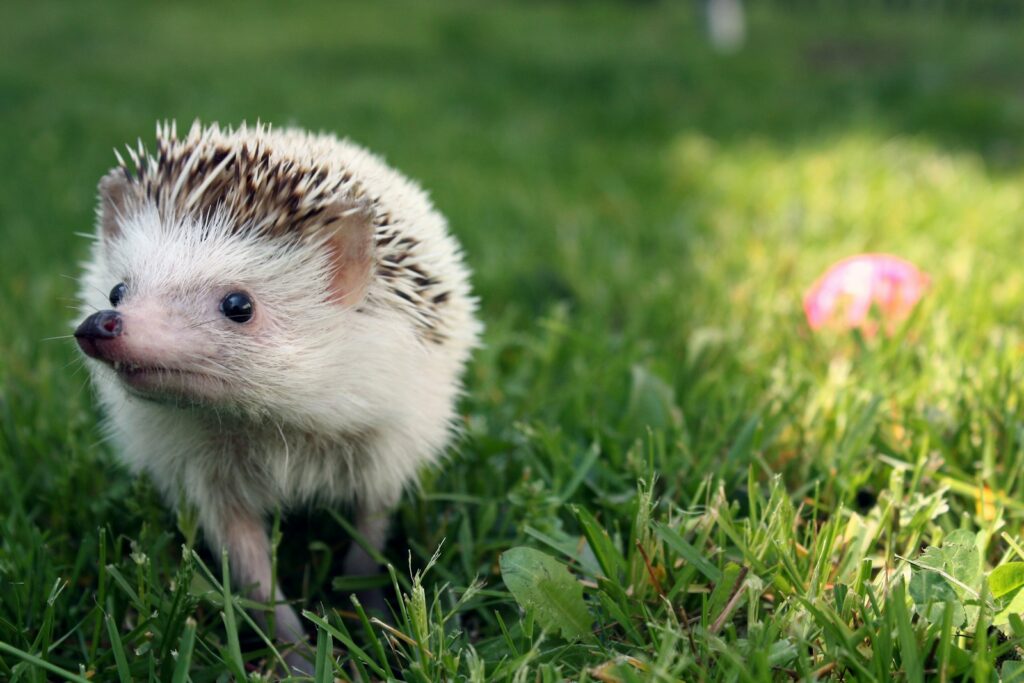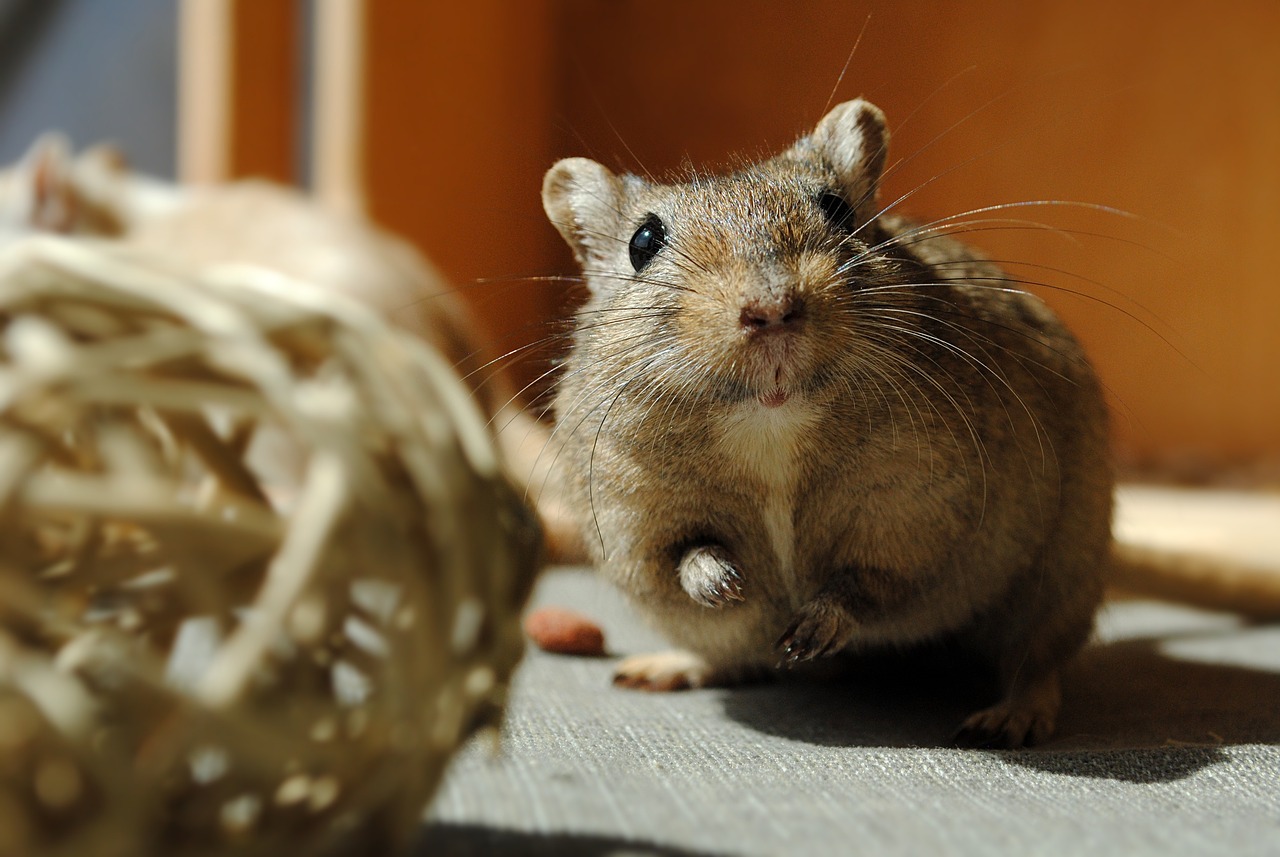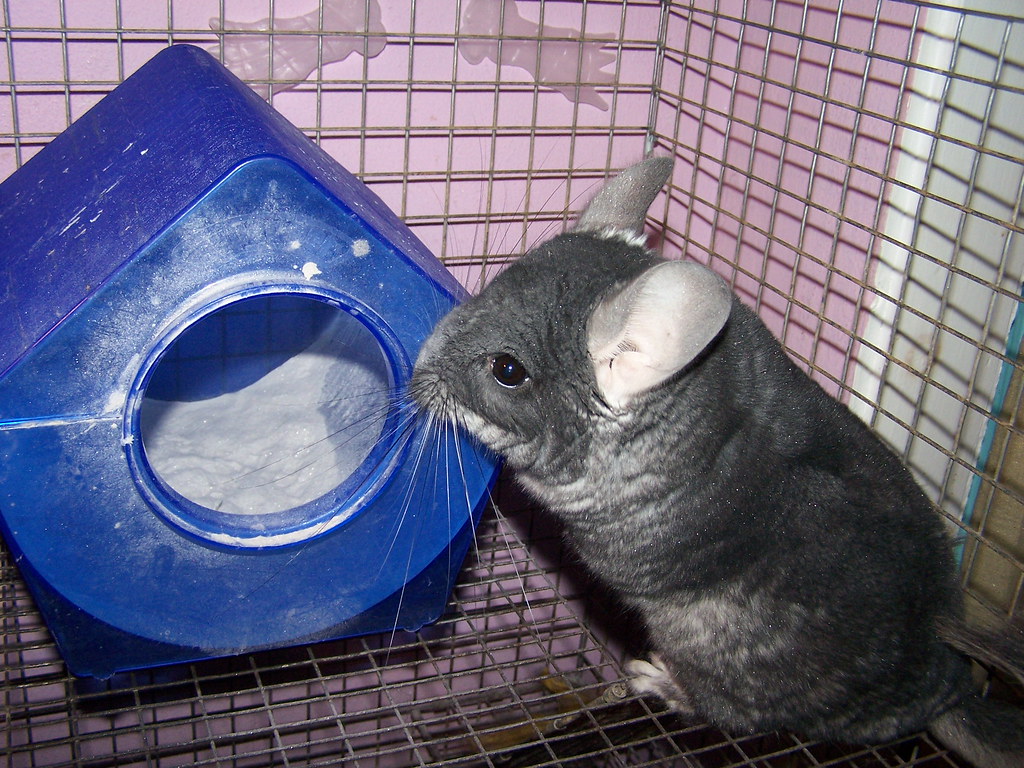Hedgehogs have become increasingly popular as exotic pets, charming owners with their unique appearance and curious personalities. These small, spiny mammals require specialized care that differs significantly from traditional pets like cats and dogs. Understanding proper hedgehog husbandry is essential for ensuring these distinctive creatures thrive in captivity. From their specialized dietary needs to their temperature requirements and handling sensitivities, hedgehogs present a rewarding but demanding pet ownership experience. This comprehensive guide will walk you through everything you need to know about providing optimal care for your spiny companion, helping you create an environment where your hedgehog can live a healthy, active, and fulfilling life.
Understanding Hedgehog Species Kept as Pets

The African Pygmy Hedgehog (Atelerix albiventris) is the species most commonly kept as a pet in North America and Europe. These hedgehogs are smaller than their wild European counterparts, typically weighing between 250-600 grams and measuring 5-8 inches in length. While there are 17 species of hedgehogs worldwide, most are protected and cannot be kept as pets. The domesticated African Pygmy Hedgehogs available today are the result of decades of selective breeding, resulting in various color patterns and temperaments. It’s important to note that hedgehog ownership is regulated differently across regions; they are illegal as pets in certain states and countries due to concerns about potential ecological impact if released into non-native environments.
Legal Considerations Before Adoption

Before bringing a hedgehog home, it’s crucial to verify their legality in your specific location. In the United States, hedgehogs are illegal to own in California, Georgia, Hawaii, Pennsylvania, and New York City, among other places. These restrictions typically exist due to concerns about invasive species risk or the exotic pet trade. Beyond basic legality, some areas require special permits or have specific regulations regarding exotic pet ownership. Prospective hedgehog owners should contact their local wildlife department or animal control agency to confirm current laws. Additionally, consider future relocations in your planning, as moving to a region where hedgehogs are prohibited could create a difficult situation for both you and your pet.
Selecting a Healthy Hedgehog

When adopting a hedgehog, seek out reputable breeders or rescue organizations rather than large pet store chains, which may not provide specialized care. A healthy hedgehog should be alert, curious, and responsive when awake, though they may curl into a protective ball when startled. Examine their eyes, which should be bright and clear without discharge, and their nose, which should be clean without excessive bubbling or sneezing. Healthy hedgehogs have clean ears, intact quills without bald patches, and move without limping or favoring any limbs. Young hedgehogs (around 6-8 weeks) are ideal for adoption as they adapt more readily to handling and new environments. Before finalizing any adoption, ask about the hedgehog’s health history, including any veterinary care already received and their typical behavior patterns.
Essential Habitat Setup

Hedgehogs require a spacious enclosure of at least 4 square feet of floor space, with larger habitats providing better opportunities for exercise and exploration. Wire cages with solid bottoms, large plastic tubs, or specially designed hedgehog enclosures all make suitable homes. Avoid aquariums, which have poor ventilation, and wire floors, which can injure their feet. The enclosure should include a hiding place (such as an igloo or small pet tent), a solid-surface exercise wheel at least 12 inches in diameter to prevent back injuries, and appropriate bedding such as fleece liners or paper-based products. Cedar and pine shavings should be strictly avoided as they contain oils that can cause respiratory issues. Position the habitat away from drafts, direct sunlight, and loud noises to reduce stress and maintain appropriate temperature regulation.
Temperature Requirements

Hedgehogs are particularly sensitive to temperature fluctuations, requiring an ambient environment of between 72-80°F (22-27°C). Temperatures below 70°F (21°C) can trigger hibernation attempts in domestic hedgehogs, which unlike their wild counterparts, are not physiologically equipped for true hibernation and may develop potentially fatal hypothermia. Conversely, temperatures above 85°F (29°C) can cause heat stress or stroke. Maintaining consistent temperatures often requires supplemental heating, particularly in cooler climates or during winter months. Ceramic heat emitters, which produce heat without light, are ideal when mounted safely above the enclosure. Avoid heating pads placed directly in the habitat, as they can cause burns. Always monitor the enclosure temperature with a reliable digital thermometer, preferably with a high/low memory function to track fluctuations when you’re not present.
Nutritional Needs and Feeding Practices

Hedgehogs are insectivores in the wild, but domestic hedgehogs benefit from a more varied diet. High-quality commercial hedgehog food serves as an excellent base, though premium cat food with 30-35% protein and 10-15% fat can be an acceptable alternative when hedgehog-specific food is unavailable. Supplement their primary diet with insects such as mealworms, crickets, and waxworms (offered live or freeze-dried) to provide enrichment and satisfy natural foraging behaviors. Fresh fruits and vegetables can be offered in small amounts, with popular options including apples, bananas, carrots, and bell peppers, all cut into small pieces to prevent choking. Avoid toxic foods including grapes, raisins, onions, chocolate, caffeine, and avocados. Feed adult hedgehogs once daily, typically in the evening when they naturally become active, and monitor their weight regularly as hedgehogs are prone to obesity in captivity.
Hydration and Water Requirements

Constant access to fresh water is essential for hedgehog health, with most adapting well to small animal water bottles with ball-bearing tips. Some hedgehogs prefer drinking from shallow dishes, though these require more frequent cleaning as they can become contaminated with bedding or food. Whichever method you choose, water should be changed daily and dispensers thoroughly cleaned at least twice weekly to prevent bacterial growth. Watch for signs of dehydration including sunken eyes, lethargy, loss of skin elasticity, or concentrated urine. During times of illness or stress, offering diluted unflavored Pedialyte can help maintain hydration, though this should be a temporary measure rather than a regular practice. Some hedgehogs enjoy occasional water enrichment through supervised shallow water play, which can simultaneously provide hydration and environmental stimulation.
Handling and Socialization Techniques

Successful hedgehog handling requires patience, consistency, and an understanding of their natural defensive behaviors. When approaching a hedgehog, speak softly and move slowly to avoid triggering their instinct to roll into a protective ball with raised quills. Scoop them from underneath rather than grasping from above, which resembles predator approach in the wild. Many hedgehogs benefit from being picked up with a small towel or piece of fleece during initial socialization. Daily handling sessions of 20-30 minutes help hedgehogs become accustomed to human interaction, though some individuals may always remain somewhat shy or defensive. The best time for socialization is during evening hours when hedgehogs are naturally more active and alert. Creating positive associations through treats like mealworms during handling can significantly improve their comfort level and willingness to interact over time.
Exercise and Environmental Enrichment

Despite their small size, hedgehogs are highly active animals that can travel several miles nightly in the wild. A suitable exercise wheel is non-negotiable for captive hedgehogs, providing essential physical activity that prevents obesity and promotes mental well-being. The wheel must have a solid running surface (without gaps or mesh) and be at least 12 inches in diameter to prevent back injuries. Beyond wheel running, supervised floor time in a hedgehog-proofed room allows for exploration and natural foraging behaviors. Enrichment toys such as PVC tubes, small pet balls with bells inside, fleece strips for digging, and puzzle feeders with hidden treats all provide mental stimulation. Rotate toys regularly to maintain interest and prevent boredom. Some hedgehogs enjoy shallow dish “ball pits” filled with plastic practice golf balls or specialized hedgehog-safe toys that encourage natural routing behaviors.
Grooming and Hygiene Maintenance

Regular grooming sessions help monitor your hedgehog’s health while keeping them clean and comfortable. Hedgehogs benefit from occasional foot baths to remove feces that often become stuck to their feet, using shallow warm water (about an inch deep) for 5-10 minutes followed by thorough drying. Full baths should be limited to once monthly or when visibly soiled, using only a few inches of warm water and unscented, mild soap specifically formulated for small animals. Nail trimming is necessary every 2-4 weeks, as overgrown nails can catch on fabrics or curl into the footpad causing pain and mobility issues. Examine their skin regularly for parasites, dry patches, or lost quills, noting that while some quill shedding is normal (particularly during “quilling” periods in juveniles), excessive loss or bald patches warrant veterinary attention. After handling, check for loose quills stuck in clothing, as these can cause minor injuries to humans.
Common Health Issues and When to Seek Veterinary Care

Hedgehogs are masters at hiding illness, making regular health monitoring crucial for early intervention. Common health concerns include obesity (often diet-related), mite infestations (causing quill loss and intense itching), wobbly hedgehog syndrome (a progressive neurological disease), respiratory infections (indicated by sneezing, nasal discharge or labored breathing), and dental problems. Cancer is unfortunately common in aging hedgehogs, particularly mammary and oral tumors. Seek immediate veterinary attention if your hedgehog shows reduced activity levels, appetite changes, abnormal droppings, difficulty walking, unusual vocalizations, or weight loss. Finding an exotic pet veterinarian with specific hedgehog experience is essential, as these animals require specialized knowledge that many general practice veterinarians may lack. Establish a relationship with such a vet before emergencies arise, and schedule preventative check-ups at least annually for younger hedgehogs and semi-annually for those over three years old.
Breeding Considerations

Hedgehog breeding should only be undertaken by experienced owners with thorough knowledge of genetics, reproduction, and potential complications. Female hedgehogs (sows) can reproduce from approximately 6 months of age, while males (boars) reach sexual maturity slightly earlier. The gestation period averages 35 days, resulting in litters of 3-7 hoglets that are born blind, deaf, and with soft quills beneath the skin that emerge within hours. Breeding females face significant health risks including pregnancy toxemia, dystocia (difficult birth), and rejection or cannibalization of offspring if stressed. Genetic diversity is a serious concern in the captive hedgehog population, making responsible breeding practices essential to prevent inbreeding and associated health issues. For most pet owners, spaying females is recommended to prevent reproductive cancers that are common in unaltered hedgehogs, though the procedure should be performed only by veterinarians experienced with hedgehog surgery.
Lifespan and Long-term Care Commitment

Domestic hedgehogs typically live 4-7 years in captivity with proper care, representing a significant time commitment for potential owners. Their care needs evolve throughout their lifespan, with juveniles requiring more frequent feeding and handling for proper socialization. Senior hedgehogs often develop age-related conditions including arthritis, dental issues, and cardiac or renal disease, potentially requiring medication, dietary adjustments, and habitat modifications such as ramps or lower-sided hiding areas. Mobility issues may necessitate more frequent bedding changes and gentle bathing to maintain cleanliness. Before adopting, prospective owners should honestly assess their ability to provide consistent care throughout the hedgehog’s entire life, including financial considerations for routine and emergency veterinary care. Establishing a contingency plan for your hedgehog’s care in case of owner illness, relocation, or other life changes demonstrates responsible ownership and ensures your spiny companion will always receive appropriate care.
Conclusion: Is a Hedgehog Right for You?

Hedgehogs make fascinating, unique companions for the right owners, but they aren’t suitable pets for everyone. Their specialized care requirements, including strict temperature control, specific diet, and exotic veterinary needs, make them more demanding than many traditional pets. Prospective owners should consider their schedule compatibility with these nocturnal animals, willingness to handle prickly creatures that may never become completely tame, and ability to provide appropriate housing and enrichment. For those with allergies to traditional pets, hedgehogs can offer a hypoallergenic alternative, though their bedding may still trigger reactions in sensitive individuals. While not as interactive as dogs or as cuddly as cats, hedgehogs reward dedicated owners with their charming behaviors, unique personalities, and the special satisfaction that comes from properly caring for an exotic species. With proper research, preparation, and commitment to their specialized needs, a hedgehog can become a delightful and rewarding addition to your household.
















Leave a Reply